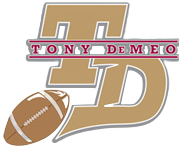I recently read an interesting article that appeared in USA Today on Friday, November 23rd 2012. The article was “Spread Offense Teams Often Deficient on ‘D’ by Brent Schrotenboer.
Schrotenboer used some shocking statistics that show that teams with high powered offenses have very low powered defenses.
- In 2012 – LA Tech was number one in the country in total offense but number 120 in total defense. Baylor was number two in total “O†but number 119 in defense. Rich Rod’s Arizona Wildcats were number eight in total “O†but 114th in defense. And finally WVU led by Dana Holgorson was ninth in total “O†but 117th in defense as the Mountaineers limped to a disappointing 7-6 record.
- In 2011 – Baylor led by RGIII was second in the land in total offense but 116th in total defense.
Schrotenboer produces stats that go as far back as 2001 when Gary Crowton coached the BYU Cougars to the top spot in total offense but their defense was ranked 102. Why does this dynamic exist?
Several theories were put forward but after examining them, though all had good points, they really never connected the dots.
- The Shoot Out Theory – because spread teams are usually up tempo no huddle teams, they have poor time of possession so their opponents get the ball more times. This wears out their defense as well as their opponent’s defense.
- The Culture Theory – offensive minded head coaches only care about their offense and how they move the ball. They also don’t give their defense any “smashmouth†plays in practice.
- The Personnel Theory – offensive minded head coaches recruit offensive players first and put their best athletes on offense.
These are good theories provided by Schrotenboer in his research. However there are some very important points that are being overlooked.
The first very important point is that total offense & total defense are meaningless stats that don’t have much to do with winning anyway. These are stats that keep the ESPN crowd busy and out of trouble. Even more meaningless is time of possession. Unless you are an exorcist time of possession has little to do with the outcome of a game. So to commend or condemn an offense for these statistics is barking up the wrong tree.
The second point is that these statistics don’t take into consideration “Non offensive touchdowns†a very meaningful stat. If your team scores a non- offensive touchdown it actually hurts both your offensive stats and your defensive stats because your offense loses a possession and your opponent gets an extra possession. So your if DB runs back an interception for a TD, it helps you win the game but it is not reflected in your total offense stat and your opponent has another possession to add yards against your defense.
The third point is these stats are averages. Some teams “pour on the score†vs the cupcakes on their schedule but can’t do anything vs the good teams. But their averages are still high. Averages are not as important in football as in baseball.
Scoring and stopping you opponent from scoring are the key things in football along with the possession of the ball. The two teams that led the nation in scoring defense played for the National championship. You can gain all the yard but if you can’t score touchdowns it is a waste of time. Conversely you can give up yards but if you keep your opponent out of the end zone you’re in the game.
Also teams that run a lot of high risk plays gain yards but then turn the ball over usually lose. They put their defense in bad field position and that hurts their defense. The turnover margin statistic is a key stat in determining the outcome of the game but the total offense/total defense stats don’t take that into consideration.
Finally, being up tempo is the “in†thing. It’s hip & sexy and fans love it except when they lose. WVU under Dana Holgorson ran a fast paced no huddle offense and was 5-0 at one point in the season but got destroyed by a superior Texas Tech team and then again by an outstanding K – State team. They got blown out in those games because they did not slow the game down. Tempo is a tool for a coach to use. If facing a weaker foe rev up the tempo and increase the number of possessions (not time of possession) but if you’re facing Goliath shorten the game and reduce the number of possessions. David would not wanted to have to beat Goliath in the best of seven.
Another change in the game that I’ve observed is how the media fawns over offensive football and doesn’t appreciate the defense. In any sport it is still defense that wins games. Notre Dame got their swag back by playing defense not by racehorse offense. However, the media is made up of mostly fans who really don’t understand the dynamics of winning football games. Offensive football may be more entertaining than defense but if you look at the National Champs or the Super Bowl Champs – they play defense first.
A team’s offense and defense should complement each other to achieve the objective: to WIN the game. It is a very simple objective as long as there is not a hidden agenda of trying to entertain or impress the media etc. Score points and keep your opponent from scoring points. Football has a clock so that is a component of the equation. The clock should be used for the same objective: to WIN the game.
In conclusion, I thought Brent Schrotenboer wrote a great, thought provoking article and brought up a great question. It all comes back to measuring the right components of what wins football games and keeping the main thing the main thing.

